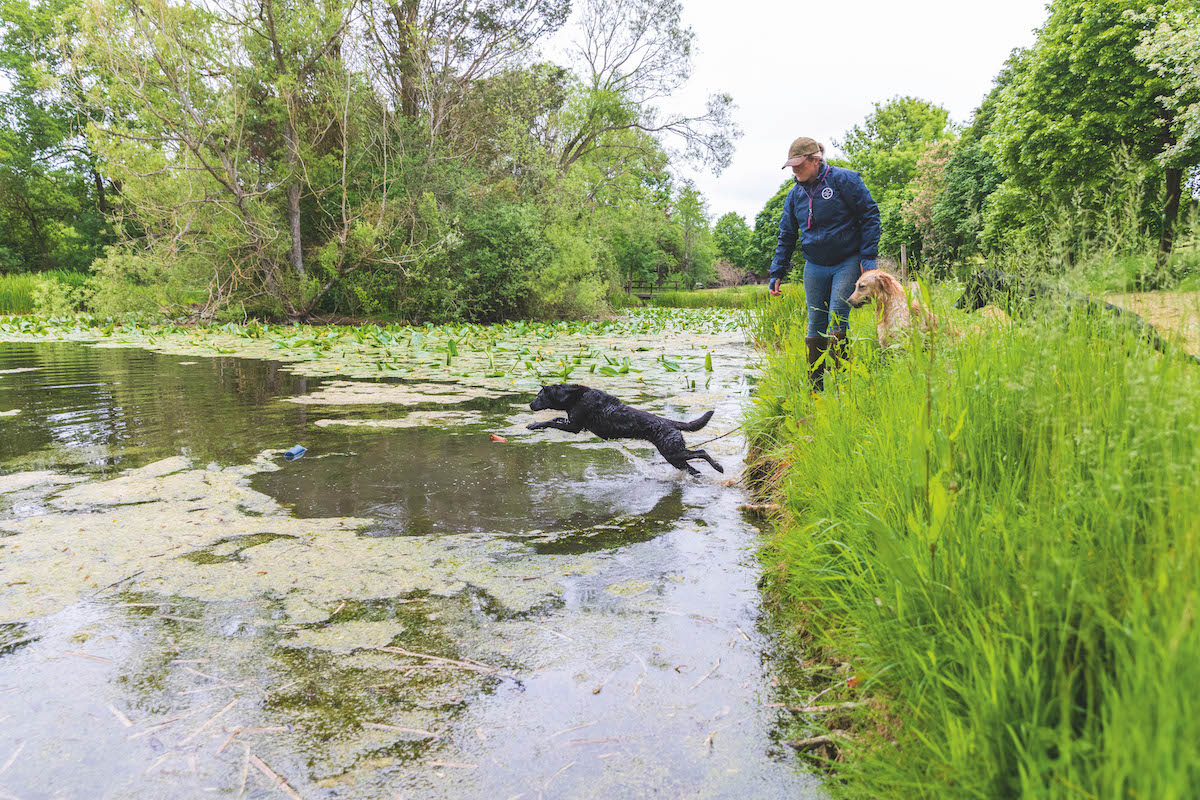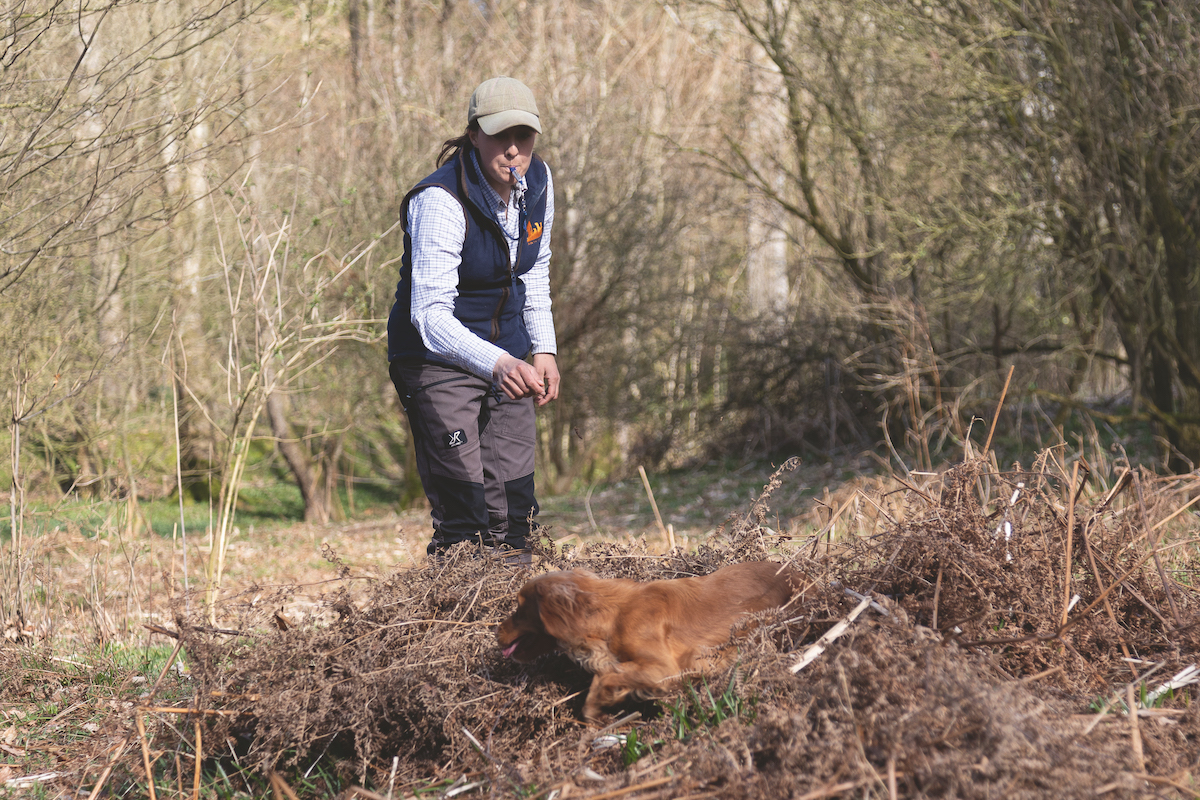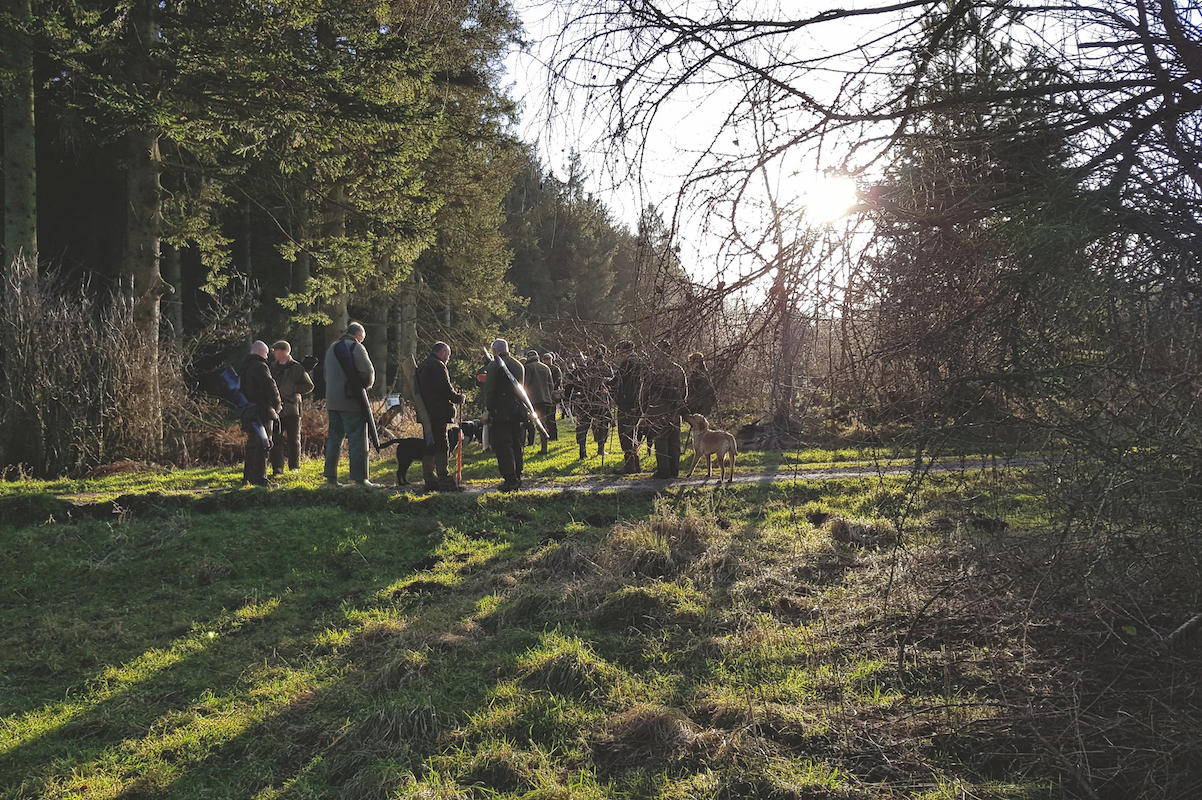Starting a working dog on water work – here’s how to do it
With warm weather finally upon us, it's the perfect opportunity to improve your dog's confidence in the water, explains Ellena Swift

Labrador Briar leaps into the water without hesitation as the young golden retriever watches on
Like many, I am so relieved to finally see the sunshine. In one respect it is not great for the dogs working as heatstroke is very serious. However, the positive is that as the weather warms up, so too does the water, meaning it is the perfect time to not only train your older dogs but also introduce any younger ones to the water. I have three such dogs all at different levels that could do with some training on water.
To begin with, I have a nine-month-old golden retriever puppy. She is working beautifully on the ground with her basics relatively solid. She is steady, walks to heel on and off lead and will do a nice mark and memory retrieve with a good delivery. This will be the first time I have taken her to water and so I am genuinely starting my working dog on water work from the very beginning. (How to help a water-shy dog overcome their fear.)

Once the young dog has had a chance to play in the water, Ellena throws a dummy a few metres in
Starting a working dog on water work
Some dogs will naturally take to water easily and confidently. Others need a few visits to build them up. How your dog reacts on their first visit will totally dictate how each session plays out. One of the bitches I train took three separate visits to the water before she was swimming confidently. Her water work was always really good but she just took a little longer to grow in confidence. She started by flying into the water, thinking she could run across it, before quickly disappearing under and splashing her way out. It’s a classic scenario for so many dogs. ( My labrador doesn’t like going into water – what can I do?)
Other dogs I have had have genuinely jumped in and swam like they have been at it their whole lives. Some of them have a very natural style and swim seemingly effortlessly with hardly a ripple. Others seem to forget they have back legs and only swim with their front legs, meaning their back end sinks. While fairly comical, it is important you help them get confident and safe on the water quickly. It is important to know your breed and plan the session accordingly.

Some dogs are naturals in the water and will take to it with no problems, while others will need more sessions to build them up
For any young dog, getting cold and miserable at a training session is no good. For this golden retriever, despite being well-prepared for cold water, she is still young and so I am only going to do short visits to the water so she can get warm and dry under the heat lamp at home. The water has gentle entry points with no dangerous currents or weeds, banks or undergrowth to contend with.
Mark on the water
To start with, I always allow the younger dogs to play with the older ones and enter the water if they choose to. A ford or shallow bit of water is ideal for this and will get them entering readily. However, I do not have that currently so, if she goes in more than a metre or so, she will have to swim. Once I have given her the opportunity to play in the water, I simply sit her down with a lead looped around her neck and let her watch a basic mark on the water from an older dog. Once she has watched, I throw a dummy a few metres in and allow her to go immediately.

For thish first session, Ellena does not worry about delivery or style, but focuses on a bold entry into the water and a successful retriever
For this early stage I do not worry about delivery or any particular style. I just want her to enter the water readily and confidently and have success retrieving something. If your dog tries to swim with only their front legs, by allowing them to retrieve it seems to weigh them down a bit at the front so they balance out and swim flatter. For the first session, if I can get a simple retrieve like this I am happy. If the dog finds this easy, I will attempt to get a solid delivery.

A bold entry into the water
Delivery seems to be the most difficult part of a water retrieve. I see a lot of novice dogs and novice handlers struggling with this aspect. To begin with, I simply assess how the dog copes. If they immediately drop the dummy when leaving the water to shake, I tend to stand much closer to the edge, if not actually in the shallow water, and take the dummy there. The dog is a lot less likely to try to shake if they are still in the water so will learn to deliver before shaking. Slowly but surely the handler works their way backwards until the dog comes out of the water without shaking or dropping the dummy.
If the dog is powering out but dropping the dummy at my feet, I often stand a long way from the water’s edge. Very often the longer run on land seems to give them a sense that they don’t need to shake so much as they have the run. I also will step in towards the dog as they return to put a little bit of pressure to prevent a shake or drop.
At this stage I do not particularly worry about the dog sitting to delivery. I find this can actually cause problems as they begin to shake and drop the dummy while attempting a sit. As they come in, I simply take the dummy.
It is important to ensure you do not keep repeating the same drill if the dog’s delivery is poor. Although initially I do not overly concern myself with the delivery part, it is also important to not make a novice issue into a habit.

River swims back directly to Ellena with the dummy
Building water skills
River is two years old and working really nicely. He has always been a confident swimmer and has a consistent delivery. I now want to build his skill being handled on water and across the other side. I start with a simple memory retrieve out the other side of the pond. He knows the retrieve is there but obviously had to walk around the pond with me. If you are concerned the dog will run around the water instead of taking a direct route across, sit the dog up one side and simply call them across. This should give them the confidence about taking that line.
Line the dog up and send them for the memory. Depending on the bit of water, try to ensure they come straight back across to you. There is a very good reason why you do not want the dog looking for a quicker or alternative route back. Firstly, they should always take the direct route there and back. If they take different routes, they run the risk of disturbing game that otherwise would have been there to flush.
Not only this but more importantly from a safety aspect, if the dog thinks it can find a way around, it may well run a long way and get into trouble. I have seen dogs on the other side of rivers and large brooks running well over 100 yards looking for a way across because they do not have the confidence or were not taught to take the direct route back. The poor handlers panic as the dog disappears out of sight.

River is already a strong swimmer, so Ellena is keen to develop his skill being handled on water
Blind retrieve
Once River has completed a nice memory retrieve, I actually put another memory retrieve out, but slightly further up the pond. There is a small island not far from the edge and I have put a blind retrieve there. I send him again on the line of the memory and as he gets to the island I stop him and hunt him. He should pick the blind relatively easily. Then I send him back. Like most young dogs, his reaction is to hunt the same ground where he picked before. I stop him but this time push him on with a ‘back’ command.
If he doesn’t immediately take a straight line back across the next bit of water towards the memory, I will stop him and leave him in a sit. I walk around to the memory and simply throw it in the air to remind him of where it is. I then walk back to where I cast from and again give the ‘back’ command. The dog should now take a good line straight back to the memory. These exercises for starting a working dog on water work are much easier if you can work with someone else or have someone throwing dummies for you.








